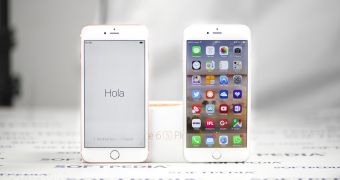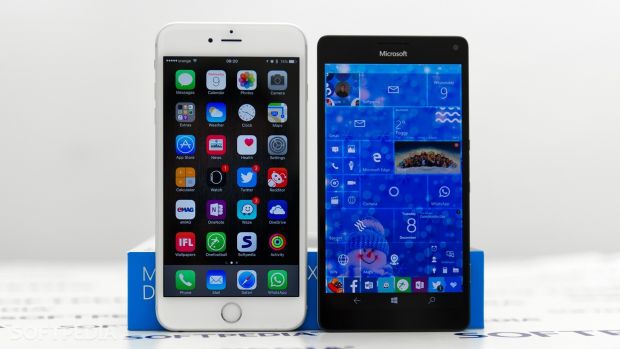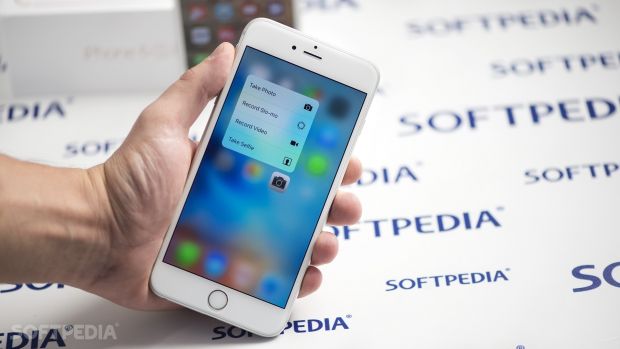Apple is expected to unveil the iPhone 7 later this year, but the prospects of coming with a revolutionary device only exist in our imagination. Cupertino is more likely to unveil a slightly improved iPhone based on the current 6s/6s Plus generation and boast the obvious under-the-hood hardware upgrades, but only with few and rather minor new features.
Apple has until recently been considered the most innovative tech company in the world, but it’s no secret that the iPhone is quickly losing its cool factor. In a market that’s evolving at an incredible speed, Apple just can’t keep up the pace with Android phone makers that are continuously improving their devices. Just look at Samsung and its new S7, which comes with several innovations, including waterproofing.
Rumor has it that Apple could offer similar features on its upcoming iPhone 7 (which, by the way, is expected to look a lot like the iPhone 6s/6s Plus), so it looks like the Cupertino is becoming more of a follower rather than the company to follow.
With the iPhone losing its customer appeal, many have decided to jump ship and their obvious destination is Android. But there are several iPhone fans who actually choose Windows Phone. And I’m potentially one of them because of three simple reasons.
#1 – Outdated device design
One of things that made the iPhone cool was the design, as the “old” Apple continuously looking into ways to keep innovating always found new methods to make the phone visually appealing. But the latest models are fading away in terms of design, pretty much because they look very similar and what’s worse is that the upcoming iPhone 7 is likely to continue this rather self-destructive recipe.
For iPhone 6 buyers, the 6s brings no difference in terms of device and this is exactly the case for the SE as well, which looks identical to the iPhone 5. More, the iPhone 7 coming in September is expected to look just like the iPhone 6 and 6s, with small differences here and there, such as new antenna lines and a camera slightly moved closer to the edge of the device.
The iPhone 6 was launched in 2014, the 6s debuted in 2015, and now the iPhone 7 is projected to see daylight in 2016. This means almost 3 full years of similar design when everyone else in the industry keeps improving their phones with new materials and aesthetics.
‘Why a Windows phone and not Android?’ you could ask. Without a doubt, Windows phones haven’t improved too much in terms of design and Lumia models on the market look almost identical to each other. But as an owner of a Lumia 950 XL and a Mozo leather case, I can definitely say that it looks better than the iPhone, not to mention that you can change the back cover and make it look fresh any time you want. That’s not the case of the iPhone, where the only thing you can “customize” is a case or a bumper.
#2 – Little to no customization, same old boring iOS
For a long-time iPhone user, the dull iOS interface is becoming painful and what’s even worse is that Apple provides almost no customization options due to its obsession for restrictions all over across the operating system.
I’ve seen articles online saying that iOS is the most eye-candy mobile OS to date and offer “simple” tricks to customize it and give it your personal touch. In reality, all these tricks come down to changing wallpapers on the home and lock screens. Without a jailbreak, you can barely change anything, and it’s nightmare to do even basic things such as using your own ringtones. It happened to me several times to pull out my iPhone when someone else’s was ringing just because we were using the same ringtone.
So once again, the same question: why Windows Phone and not Android? Although Android is considered to be the mobile OS that lets users customize its every little part, Windows Phone has the one thing that nobody has: live tiles. Plus, Windows phones also feature several customizations options and creating a unique Start screen is just a matter of imagination. Microsoft is now improving the platform based on user feedback, so there’s no doubt that such features will keep coming.
This is actually one of the best things about Windows phones. Microsoft keeps improving the platform and it does it together with the community, and unlike Apple which also has a beta program for iOS, the Windows software giant is working at a much faster pace and in a more effective way. Getting an update from Apple for an iOS bug is always a matter of months and out of band patches are almost non-existent.
#3 – Lack of innovation
Apple is no longer the company that innovates with every single release and the only thing that its devices bring new to this quickly evolving market is new hardware. And while that’s in most cases a welcome improvement, the iPhone is losing ground against competition who is pushing for new features more effectively.
Living proof is Microsoft and Windows 10 Mobile, as the platform supports new authentication methods and connectivity options that push phones beyond the small screen.
Windows 10 Mobile supports Windows Hello, an authentication system that uses an iris scanner to grant users with access to devices, whereas the iPhone sticks to the same fingerprint reader (which doesn’t even work with a wet finger). Rumor has it that Apple could also offer biometric authentication on the iPhone 7, so once again Cupertino could become a follower.
What’s more, Microsoft’s also pushing hard for Continuum, a new feature that allows customers to connect their phones to bigger screens, plug in a mouse and keyboard, and work on the device just like on a traditional PC. This is possible thanks to Windows 10 Mobile which can run on screens of different sizes and become an almost fully-featured Windows 10 version.
What (still) keeps me on the iPhone – The app ecosystem
When looking for an iPhone replacement, the most obvious choice is Android. It goes without saying that Android and iOS are the two leading mobile platforms right now, and Windows Phone and BlackBerry OS are still trailing behind.
In most of the cases, Android is just fine, but going for Windows Phone is just a personal choice. Windows Phone is more of a guilty pleasure for those who once fell in love with the platform, but there’s still one major drawback: the lack of apps.
I’ve said it several times and I say it again: unless Microsoft fixes the lack of apps, it’s hard to see this platform growing. And this is what holds me back from switching to Windows Phone as a daily driver. Microsoft is banking on universal apps to address this problem, and although things are improving, they do it rather slowly.
But with Apple’s lack of reaction to everything happening in the mobile world right now, it’s hard to believe that more people won’t make the switch to Android and why not to Windows Phone in the coming months. Apple needs to innovate fast and unless the iPhone 7 brings something truly innovating, the company’s going to have a hard time remaining relevant in the next one year and a half until the 7s sees daylight. It turns out the leader has become a follower.

 14 DAY TRIAL //
14 DAY TRIAL // 



